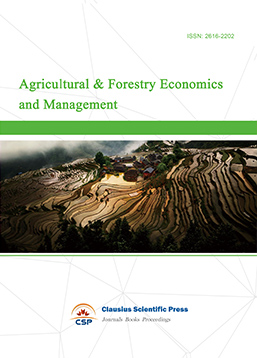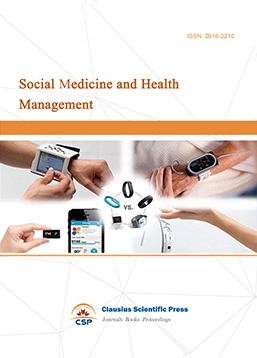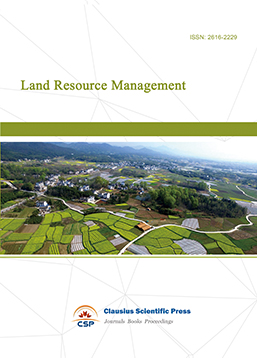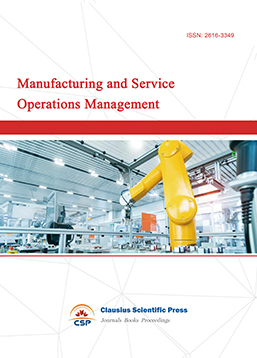Models for Optimizing Traffic Flow in Unmanned Mining Road Networks Based on High-precision Maps
DOI: 10.23977/ieim.2024.070203 | Downloads: 20 | Views: 1347
Author(s)
Bing Cui 1, Yu Xia 2, Huijun Zhao 2, Haibo Jiang 2, Jingwen Duan 2, Xueping Hu 2
Affiliation(s)
1 North Mining LTD., Beijing, China
2 Racobit Intelligent Traffic System (Beijing) Technology Co., LTD., Beijing, China
Corresponding Author
Bing CuiABSTRACT
This article proposed a high-precision map based traffic flow optimization model for unmanned mining road networks, aiming to optimize the flow of unmanned vehicles inside the mine through accurate map information and advanced algorithms, reduce traffic congestion, and improve transportation efficiency. By constructing high-precision maps and using graph theory and machine learning algorithms, the road network traffic flow of unmanned mining vehicles was optimized. The four experimental conclusions in the experimental stage indicated that the research model could effectively optimize the traffic flow of unmanned mining vehicles, and improve the efficiency and safety of mining operations. The effectiveness and practicality of the model were comprehensively validated through four experiments during the research phase. In the first road network efficiency evaluation experiment, the average speed of unmanned vehicles increased from 20 km/h to 30 km/h, and the average travel time decreased from 30 minutes to 20 minutes. In the traffic congestion experiment, the research model reduced the congestion relief time from 45 minutes to 25 minutes under high flow conditions of 150 vehicles per hour. In the dynamic route adjustment experiment, when encountering unexpected events, the optimized response time was reduced from 45 minutes for Event 1 to 30 minutes, and from 40 minutes to 25 minutes for Event 2. In the final safety performance evaluation experiment, the optimized accident rate decreased from 0.8 to 0.3; the number of violations decreased from 120 to 40; the number of emergency braking events also decreased from 90 to 30. From the data conclusion, it can be seen that the traffic flow optimization model for unmanned mining vehicles based on high-precision maps has shown significant effects in improving traffic efficiency, reducing congestion, enhancing dynamic route adjustment ability, and enhancing safety, fully verifying its application value in the process of mining automation and intelligence.
KEYWORDS
Unmanned Vehicles, Optimization of Mining Traffic Flow, High-precision Maps, Dynamic Route AdjustmentCITE THIS PAPER
Bing Cui, Yu Xia, Huijun Zhao, Haibo Jiang, Jingwen Duan, Xueping Hu, Models for Optimizing Traffic Flow in Unmanned Mining Road Networks Based on High-precision Maps. Industrial Engineering and Innovation Management (2024) Vol. 7: 17-24. DOI: http://dx.doi.org/10.23977/ieim.2024.070203.
REFERENCES
[1] Huang Fucheng, Liu Dexin, Xin Bopeng, etc. Ship traffic flow prediction based on genetic algorithm (GA) optimized BP neural network. Journal of Guangzhou Institute of Navigation, 2020, 28 (1): 4-9.
[2] Shen Y. Optimization of Urban Logistics Distribution path under dynamic Traffic Network. International Core Journal of Engineering, 2020, 6(1):243-248.
[3] Aleadelat W, Albatayneh O, Ksaibati K. Developing an Optimization Tool for Selecting Gravel Roads Maintenance Strategies using a Genetic Algorithm. Transportation Research Record, 2020, 2674(5):108-119.
[4] Jooste F J, Costello S B. Efficient and Stable Road Maintenance Strategy Evaluation Algorithm Utilizing a Trigger Horizon. Transportation Research Record, 2020, 2674(11):424-439.
[5] Xing Qingsong, Wang Chuan, Deng Fumin. Optimization of Time Dependent Emergency Delivery Decision under Heterogeneous Road Network Impedance. Highway Transportation Technology, 2023, 40 (12): 245-258.
[6] Zhao Peng, Luo Junjun, Feng Jinqing. Construction and Optimization of 5G Network for Autonomous Driving System of Electric Locomotive in Longshou Mine. Mining Machinery, 2021, 49 (9): 7-9.
[7] Cheng Kunpeng, Wu Xiang. Optimization of manned scheduling system based on unmanned driving technology in open-pit mines. Value Engineering, 2023, 42 (31): 20-22.
[8] Wu H, Liu W, Jiang M, et al. Numerical Simulation Investigation on Parameter Optimization of Deep-Sea Mining Vehicles. Chinese Journal of Mechanical Engineering, 2023, 36(2):365-377.
[9] Ribeiro R G, José R C, Cota L P, et al. Unmanned Aerial Vehicle Location Routing Problem with Charging Stations for Belt Conveyor Inspection System in the Mining Industry. IEEE Transactions on Intelligent Transportation Systems, 2020, 21(10):4186-4195.
[10] Liu Minqiang, Gao Xiaoqiang, Chen Gang. Trajectory protection method for unmanned transportation vehicles in open-pit mines. Industrial and Mining Automation, 2022, 48 (S01): 80-82.
[11] Eldosouky A M, Pham L T, Henaish A. High precision structural mapping using edge filters of potential field and remote sensing data: A case study from Wadi Umm Ghalqa area, South Eastern Desert, Egypt. The Egyptian Journal of Remote Sensing and Space Science, 2022, 25(2): 501-513.
[12] Ma S, Qiu H, Yang D, et al. Surface multi-hazard effect of underground coal mining. Landslides, 2023, 20(1): 39-52.
[13] Gu Q, Xue B, Song J, et al. A high-precision road network construction method based on deep learning for unmanned vehicle in open pit. Mining, Metallurgy & Exploration, 2022, 39(2): 397-411.
[14] Leo Stalin J, Gnanaprakasam R C P. Application of unmanned aerial vehicle for mapping and modeling of Indian mines. Journal of the Indian Society of Remote Sensing, 2020, 48(6): 841-852.
| Downloads: | 27032 |
|---|---|
| Visits: | 816922 |
Sponsors, Associates, and Links
-
Information Systems and Economics

-
Accounting, Auditing and Finance

-
Tourism Management and Technology Economy

-
Journal of Computational and Financial Econometrics

-
Financial Engineering and Risk Management

-
Accounting and Corporate Management

-
Social Security and Administration Management

-
Population, Resources & Environmental Economics

-
Statistics & Quantitative Economics

-
Agricultural & Forestry Economics and Management

-
Social Medicine and Health Management

-
Land Resource Management

-
Information, Library and Archival Science

-
Journal of Human Resource Development

-
Manufacturing and Service Operations Management

-
Operational Research and Cybernetics


 Download as PDF
Download as PDF